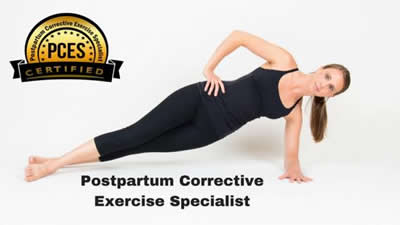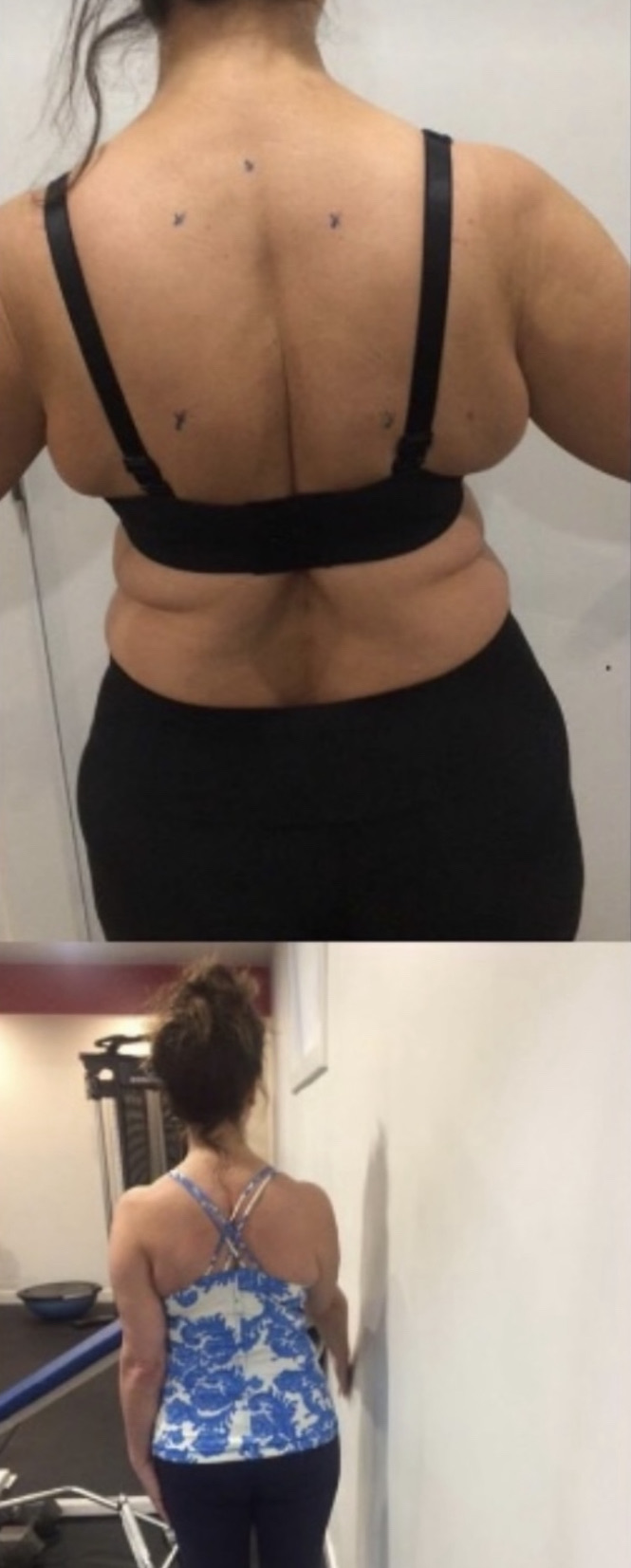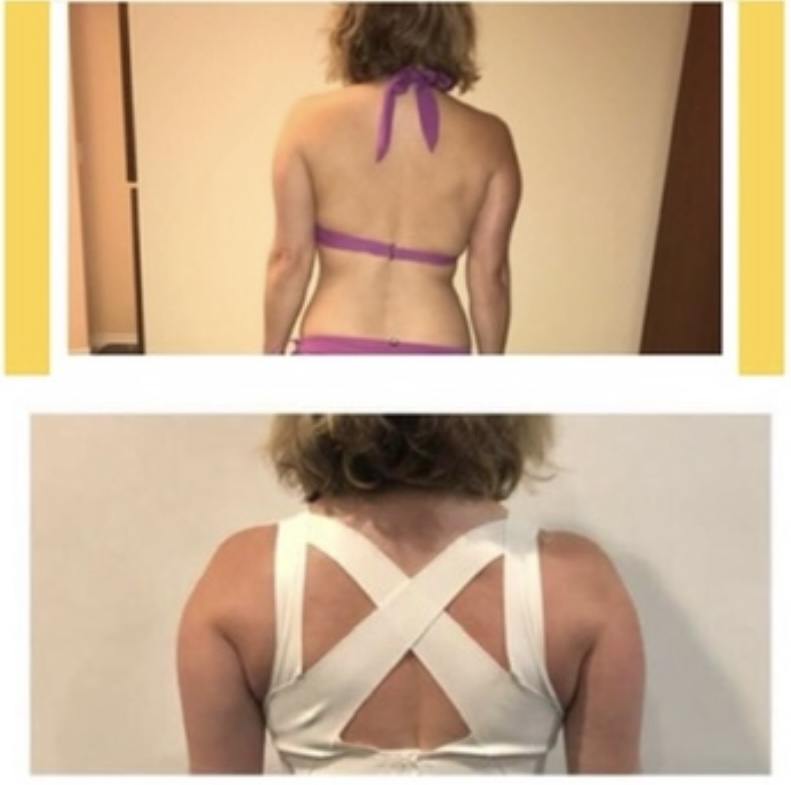Postpartum Corrective Exercise
Pelvic floor health is important to everyone, not just women who have recently had a baby. Women who have never experienced child birth, men, and even teens can experience the effects of a pelvic floor that is not functioning correctly. Women decades after having a baby may suffer issues of pain and even depression. These can be linked to ineffective strategies of stabilization.
All people can experience hip, leg, deep glute, back, neck and shoulder pain. These may all be symptoms of a pelvic floor that is not functioning properly, as is incontinence, hernias and diastasis recti, and SI joint pain. A strategy that is typically applied is to attempt to make the pelvic floor stronger by doing Kegels. This will not work for an over- active pelvic floor and may result in making things worse! The pelvic floor is a portion of the body’s system of stabilization. It is crucial to look up and down the kinetic chain at how your body stabilizes movement, why its doing that, and then changing to an optimal strategy.

Lower Belly Pooch
This is a red flag of an inefficient system. There are compensatory patterns that the body will take to get a job done. “Cheaters” take over. Any low belly pushing out during movement is a sign that there is pressure down on the system. Deep core functioning is absent. 360-degree breathing must be restored, which requires rib motion. Pelvic floor must lift, and transverse abdominals must fire. This can be felt by putting the hands on the inside of the hip bones. The muscles draw gently in here. This area must stay engaged throughout the entire core brace. Alignment of pelvis must also be addressed, as does a high lumbar curve, if present.
Diastasis Recti
Women who have had babies are a special population, as 100 percent of women at due date of their pregnancy have abdominal separation. The body has a fantastic way of healing itself, and at 6 weeks postpartum, 60 percent of women close this up without any intervention. However, much of natural healing of the abdominal wall occurs between birth of baby and 6 months. Past 6 months, there is a population of women whose natural system has not alleviated this issue. For them, it is crucial that they retrain their bodies to control pressure. Abdominal separation is a strategy that the body uses to deal with pressure. If it is not corrected, it will result in injury. The abdominals must be taught to fire equally, alignment must be kept through movements and a deep breathing pattern used. There is a progressive system of loading that must be followed, with no direct loading at the onset on healing. Just closing the gap is not enough. There must not be any squishiness underneath, any doming up of the center (6 pack) abdominal muscles, or low belly pooching present. There are varying types of openings, and each must be addressed a way. Not properly closing a gap greatly increases the event of a pelvic floor prolapse.
Pressure Management
So, pelvic floor issues and general issues of pain all come down to the body’s strategy of creating stability. Pressure regulation is a must. If there are pressure leaks, they will come in the form of pressure down (prolapse, incontinence) pressure out (hernias or DRI) or pressure up (reflux, hiatal hernia). Therefore, the strategy to fix must come in integration of the system. That is addressing positioning of the head down to the strength of the arch of the foot. What happens at one joint in the body affects what happens at the joint above and below. The pelvic floor is only one player in the kinetic chain. Where your head goes, your body follows.
SI Joint Health and Core Stability
The junction where the pelvis meets the spine is known as the SI joint. As you can see so far, the body is all connected. One-part builds onto another to create movement. This area of the body is part of where energy gets transferred from the legs to the upper body. All parts of the body must move together correctly, or this joint is adversely affected. Any pain in this joint is a symptom of a muscle imbalance around the joint. If left long enough it may become a chronic condition such as osteoarthritis. The deep core muscles stabilize this joint (diaphragm, abdominals and multifidi), so it is essential that they are firing properly. If they are not working, then the timing of the hip muscles is affected, and recruitment is altered. Some muscles don’t work at all, and some muscles pull double duty. An overworked or tight muscle is an ineffective muscle. Pelvic stability must be restored. This is done by addressing habitual postures that interfere with good movement. There is a specific order to training that must be followed. Stability in neutral, alignment, breathing mechanics all must be addressed. T-spine rotation, foot and ankle mechanics stabilize the joint from top and bottom. These must be functioning before progressing to dynamic single leg exercises. Often it takes acquiring a level of good positional strength for SI joint issues to alleviate. Pain is the body’s white flag. There are many indicators before pain sets in, like loss of balance and tightness.
Importance of Deep Breathing
The big picture is that “stuff” connects right from the neck down to the feet. Poor movement patterns reinforce poor alignment. Poor alignment affects how the diaphragm functions. The diaphragm shares fascial connections with the psoas (hip flexor/spinal stabilizer), quadratus lumborum and transverse abdominus (core muscles). Tightness in muscles like these will affect breathing. Deep breathing is integral to a correctly working system. Without it, the body will not properly function.
We can extend improper functioning of the system to issues such as “baby blues” or postpartum depression. Deep breathing is essential to nervous system functioning. It affects the vagus nerve, which is the longest nerve in the body and it is a huge player in fight or flight response. Shallow breathing stimulates the SNS. This results in stress response overdrive. A body that is stressed all day, everyday is not going to heal. All these issues compound on top of each other. So, no matter what the symptoms that are occurring, it is essential that alignment and then breathing mechanics are addressed first.
As a corrective exercise specialist, we begin with a detailed assessment of your current strategies to manage pressure. This will give you a deeper understanding of why you are experiencing the symptoms that you experience. It will also serve as a starting point to program exercises that will result in a functioning system that will allow you to build strength and great health upon.
Post Rehab
Post Rehab means training after a client has been cleared for exercise by a doctor or physiotherapist.
Strength is corrective when optimal positions are maintained during exercises. Here are two before and after pictures of clients that I have worked with that were cleared by physios to begin strength training. Both were having issues with their shoulders. Sometimes its not just the shoulder that is the issue, but other details like the resting position of the shoulder blades (I marked the one client’s with erasable pen to note the difference and where they go in movement).
Deep core function, breathing mechanics, mobility of joints, alignment of the rib cage and pelvis. All of these details can be seen during the initial meeting and then I plan a program to get everything working better to build that foundation of strength upon. Both of these clients progressed on to gaining strength and muscle mass and did it with pain free movement!


